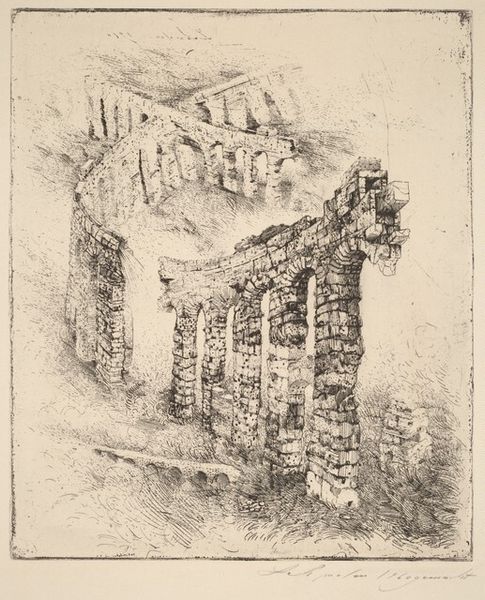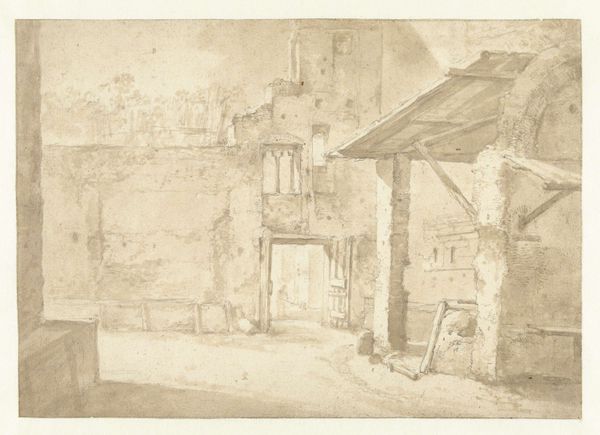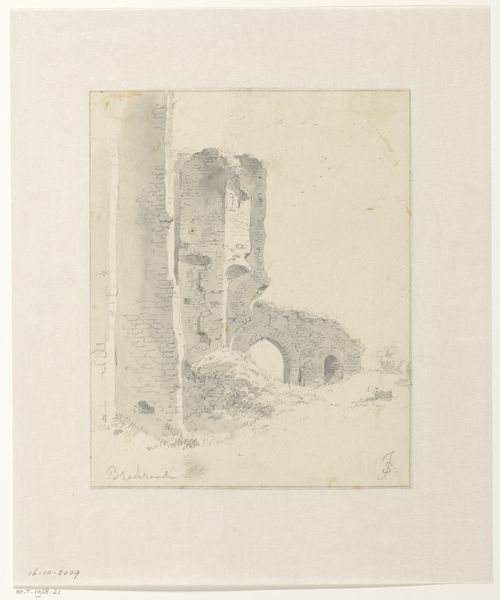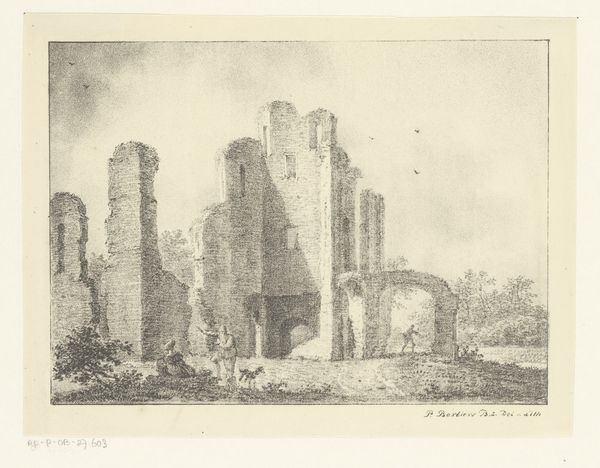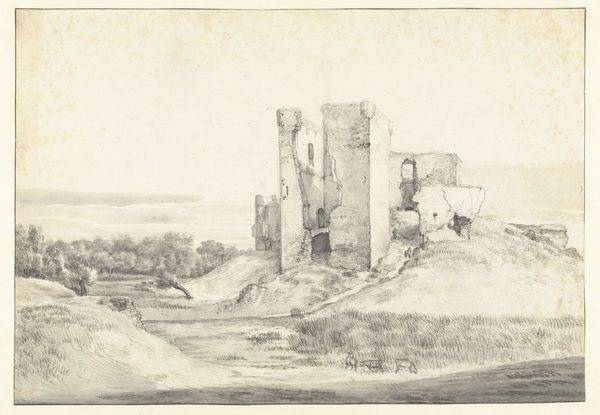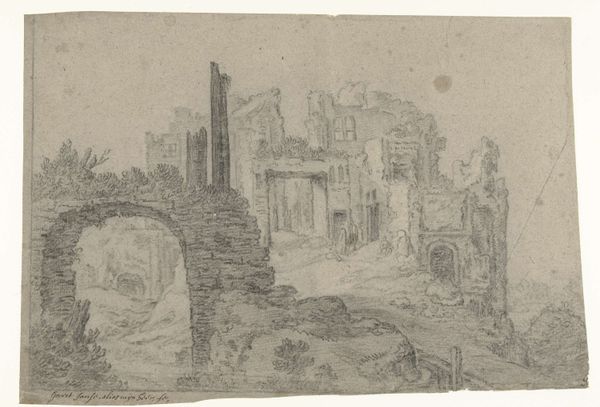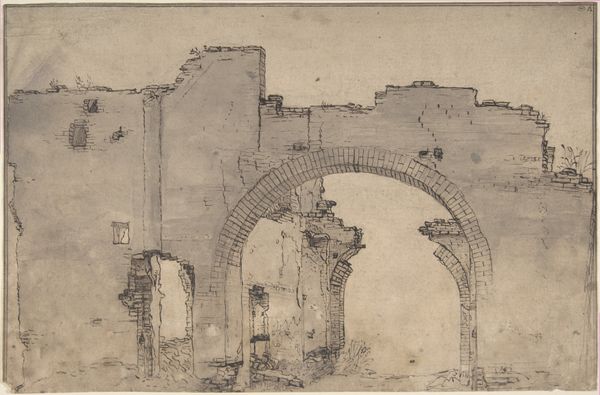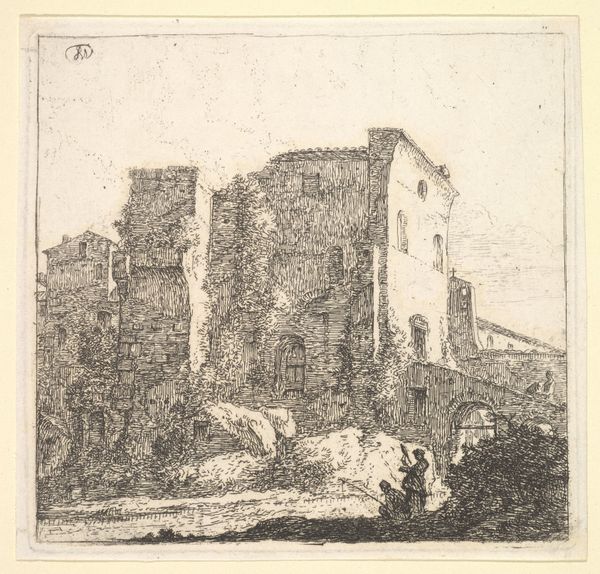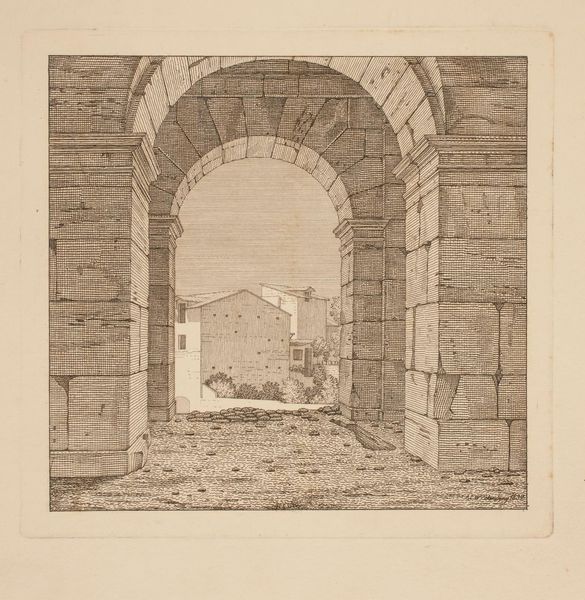
drawing, paper, ink, architecture
#
drawing
#
baroque
#
landscape
#
etching
#
paper
#
ink
#
cityscape
#
architecture
Dimensions: height 198 mm, width 198 mm
Copyright: Rijks Museum: Open Domain
Curator: This image of the Baths of Trajan is rendered in ink on paper by Bartholomeus Breenbergh, dating back to 1625. There is a softness here, like it's viewed through a distant memory. Editor: The subtle gradations of the brown ink give the structure depth and weight. The use of this medium brings attention to its construction—the way each stone was rendered in the process of creation. Curator: Exactly! Breenbergh was part of a group of Dutch artists active in Rome during the early 17th century, fascinated by the remnants of classical antiquity. It represents an interesting shift; an image of once lavish baths reduced to decaying materiality. Editor: I’m also curious about the intended audience. A piece like this provides information and instruction through visual form, creating an etching from observation to distribute knowledge of an important site for social gatherings. Curator: Indeed. The Baths were monumental, holding significant symbolic weight as centers for Roman social life and political discourse. Reproducing them in this intimate medium shifts that significance, altering how one would encounter it in this iteration. Editor: And how would one read its decay? Breenbergh lived at a time of great religious and political struggle. The fact that these monuments of Roman engineering could be represented by relatively available and simple technologies speaks volumes. Ink and paper democratize these sites, enabling them to persist through reproduction and collective engagement. Curator: It's also fascinating to consider how prints like this became collectables for an emerging art market, transforming historical relics into commodities. The ruins now become consumer items, a sign of an artist's technical skills more than its civic function. Editor: I appreciate the way you’ve articulated that, linking its material condition and historical context to this market. Curator: And it helps reveal something crucial, I think: our ongoing negotiation with the past through images.
Comments
No comments
Be the first to comment and join the conversation on the ultimate creative platform.
